And what would that mean going forward? Some hard choices, necessary changes, and a reckoning.
Originally published on LinkedIn Pulse September 8, 2017
By Brian E. Frydenborg (LinkedIn, Facebook, Twitter @bfry1981) September 8th, 2017; UPDATE: September 11th, 2017: Fortune favored Florida as Irma was not nearly as catastrophically destructive as it could have been, but it could just as easily have been otherwise, and next time, which may even be in a few weeks, fortune could just as easily abandon us.

AMMAN — We just saw Houston, America’s fourth largest city, become an underwater one, suffering extensive damage as Hurricane Harvey overwhelmed a region woefully unprepared for an event that had been warned about for years, even if it occurred with an unprecedented degree of historic, record-setting rainfall. Now, Florida, and, it seems, Miami, are in the path of another monster storm: Hurricane Irma, which may yet become the strongest tropical cyclone ever recorded in the Atlantic or on earth.
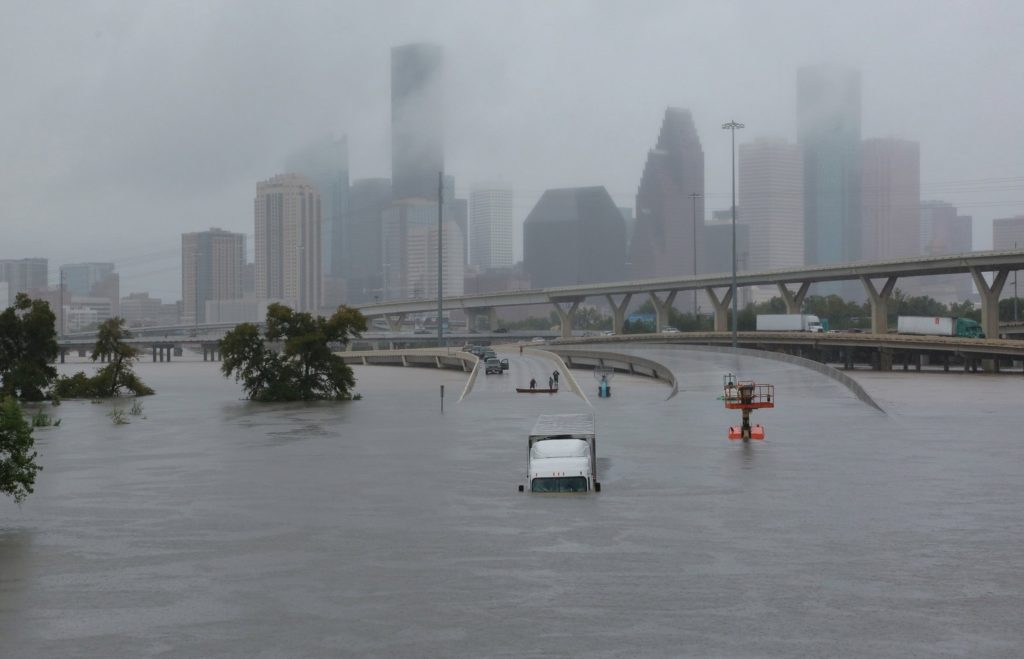
REUTERS/Richard Carson
Two or even more of America’s major cities may be underwater and severely damaged in the span of just a few weeks, and two catastrophic storms occurring within but a few weeks of each other will be responsible if that comes to pass; a third, newly formed hurricane, Jose, even may hit the U.S. after Irma, with a fourth hurricane now deluging the Mexican Gulf Coast and likely on course to bring more rain to Texas. For Houston, the damage is so extensive and severe and so difficult to recover from that there may never be a full recovery, just as New Orleans is not the same after Katrina, even over a decade later.
Is this the new normal, and, if so, what does that mean and what do we have to do?
*****
By new normal, I do not mean to suggest that these storms will be a weekly or monthly thing during hurricane season, as is the case this season. But I do mean to suggest that the U.S. could easily expect being hit by a catastrophic storm or two every year or every other year.
Catastrophic landscapes that were the realm of science fiction, in films like The Road and Interstellar, the original Planet of the Apes, even the Mad Max series and the Book of Eli, now seem to be a possible near-present reality. Often, these films showcase massive storms that are symptoms of planet-altering climate change amid a hopeless, depressing, desolate earth home to a dwindling and desperate human race.
Literature also contains more than a few references to catastrophic natural disasters, from Gilgamesh’s and Noah’s floods to Voltaire’s Candide’s reality-based Lisbon and the wave-swept Númenor of Tolkien. In real life, from tsunamis and floods to volcanoes and earthquakes, natural disasters and climate change have destroyed and weakened cities and civilizations alike, some of which never recovered; here in Amman, Jordan, I live not even a three-dozens miles’ drive from Jerash, a beautiful ancient Roman city that never recovered from a massive earthquake that devastated it in 749 C.E; it is haunting to walk through ancient city’s wide, colonnaded streets, once teeming with life and love, and shops and festivals, empty now except for tourists.
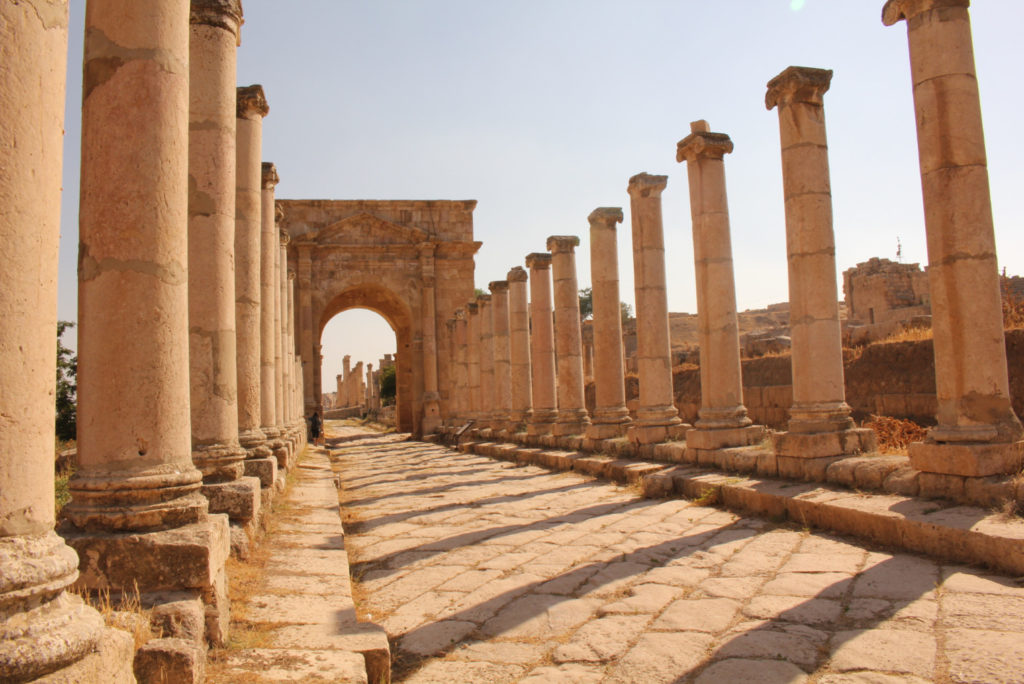
A once bustling city thoroughfare in Jerash- photo by author
Is this a fate that could befall cities like Houston and Miami?
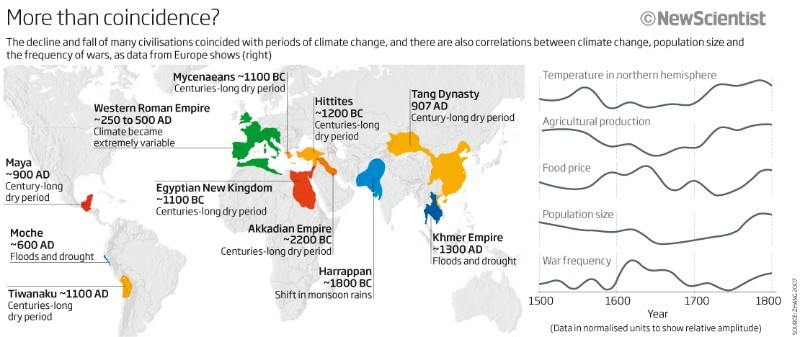
In a word, yes, and, at this point, there is little we can do if that is what is to be.
Imagine Katrina, Harvey, and Irma-like storms striking the Gulf Coast every few years or worse: cities like Houston, Miami, and New Orleans devastated every few years by massive wind damage and flooding, a possibly permanent toxic mold problem—already difficult enough to deal with without recurring, frequent flooding—creating asthma epidemics and worse for anyone spending an extended amount of time there, insurance companies and local businesses overwhelmed, students unable to go through a normal school year or counting their blessings when they do, the sick and elderly not wanting to risk treatment or retirement there for fear of having to undergo a difficult evacuation. It would simply make no economic sense for locals to keep having to rebuild everything after massive frequent destruction; crops, oil refineries, fishing, tourism, all manner of industries would flop were hurricanes like Katrina, Harvey, and Irma to happen with any level of frequency within a decennial span. Insurance companies would be forced to up their rates on a population already struggling economically and now facing a daunting recovery effort, placing most of them outside of insurance protection (as is already the case). And how many times will the nation as a whole want to fund a recovery in the same region for the same disasters over and over again?
In short, a large swath of the United States may become uninhabitable for all practical purposes within our lifetimes, its residents wholly unable to cope with the frequent fury of Mother Nature, and a society that will wisely decide it cannot fit the bill for what once termed “hundred-year events” that are now happening every few years. People will be forced to fend for themselves in inhospitable conditions or relocate unless somehow we create hurricane-proof, wind-proof, and flood-proof buildings (good luck with that).
Of course, maybe this won’t be the case. Unlike, say, global temperatures, for which we have data spanning the long-term, we only have a few decades of reliable records of hurricanes; we’re simply not sure of the full extent of the effects that the undeniable reality of man-induced climate change are having or will have on hurricanes, but there is a consensus that warmer temperatures and rising sea levels are going to increase the deadliness, destructiveness, and intensity of hurricanes. There is also consensus that we will see more storms of a higher intensity and fewer weaker storms, though there is not as strong a consensus that this will result in fewer overall storms, though that is still what research suggests. It is notable that the U.S. has never before been hit by two category 4 or 5 hurricanes in a single season, but that is about to be the case in a matter of days, with the most intense part of hurricane season just beginning and the possibility of a third or even more storms to come before season’s end.
I have personally experienced multiple hurricanes of various strengths, and would gladly go through five weaker ones than one monster storm, so I am not sure the fewer storms but more intense ones is a net gain in any true sense, and the research should not provide comfort to no one.
****
This year may very well be an exception, but it may not be, and it is quite possible that it is not; we will have to wait and see to know.
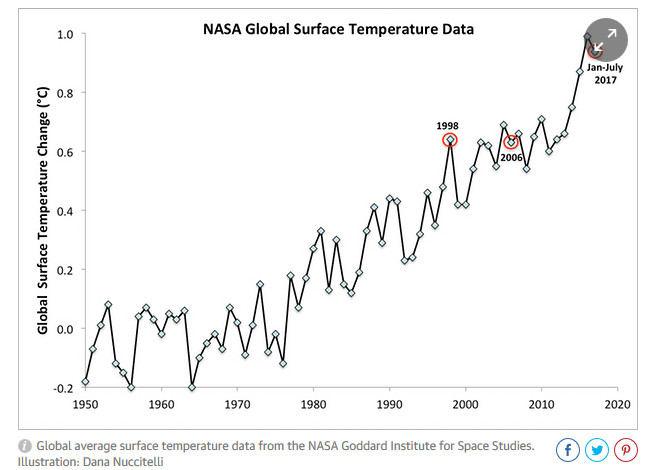
The Guardian
But we do not have to wait and see to prepare, to consider the worst that was once before unimaginable; over the past few years (and really for decades), we have been seeing the hottest years in recorded history, and we will be seeing more intense storms that will threaten not just the Gulf and southern U.S. Atlantic Coast, but also the mid-Atlantic and northeastern U.S. seaboard as ocean temperatures continue to rise and expand the zones in which the most intense hurricanes can maintain their intensity. We cannot stop these increases in the near future, but we can, with effort, try to limit greater damage further down the road, though, of course, Trump’s withdrawal from the Paris Agreement makes that all the more difficult.
But in the immediate near-future, the Southeastern U.S. is faced with a reckoning: for years, they have competed successfully with other regions in the country by offering businesses lower regulations and taxes and offering residents lower taxes, seeing economic and population growth partly as a result, as well as growing political clout in the U.S. House of Representatives. As Garrison Keillor eloquently noted recently, Minnesotans know they have to expect tough blizzards every winter; they have tougher regulations and higher taxes to be able to deal with these massive storms every winter and don’t expect a federal government handout when the inevitable happens. If massive hurricanes are to be a regular part of life in the Republican-led Southeastern United States, as in the case after any catastrophic natural disaster, changes will have to be made, sacrifices endured; this should mean that the long honeymoon this region has had disdaining the concepts of federal assistance (all Republican U.S. senators from Texas—Ted Cruz and John Cornyn—and Florida—Marco Rubio—voted against Sandy aid for the Northeast, as did the vast majority of U.S. House Republicans, including nearly every Republican from Texas and Florida), federal involvement in state affairs, regulation, and taxes should end now. Among the seven states with no state income tax are Texas and Florida, and other Gulf Coast states are among those with the lowest state income tax rates in the country; it is something of a shameless ask to request so much federal financial aid from other states willing to tax their residents more, to ask to those states to redistribute their wealth towards states unwilling to take responsibility by taking on their fair share of the burden and that opt, instead, to maintain an economic and population-attraction edge over the very states from which they are requesting aid. Those in the Southeast may also want to rethink their status as the most populous regional hotbed of both of man-made climate change and being among the most against actually enacting policy to do something about it.
America should come together and support our fellow citizens in those areas being devastated this hurricane season, but then we should demand a hard, honest look at the governing culture of some of the areas hit and demand hard, honest changes that will make them better prepared to handle what likely to be more frequent monster storms in the near future.
Those are the first few steps: the next will involve far tougher decisions about how different regions can continue on if such catastrophic storms end up happening far more frequently than has ever been experienced in recorded history.
But if we can’t get the Gulf Coast to increase regulations that can save lives and institute the same taxes most of the rest of the country has in order to give themselves more resources that will better prepare their people and localities for disaster preparedness and response, good luck having any of those more challenging conversations down the road as we witness what is perhaps the beginning of climate change making devastation the norm for an entire region of the country.
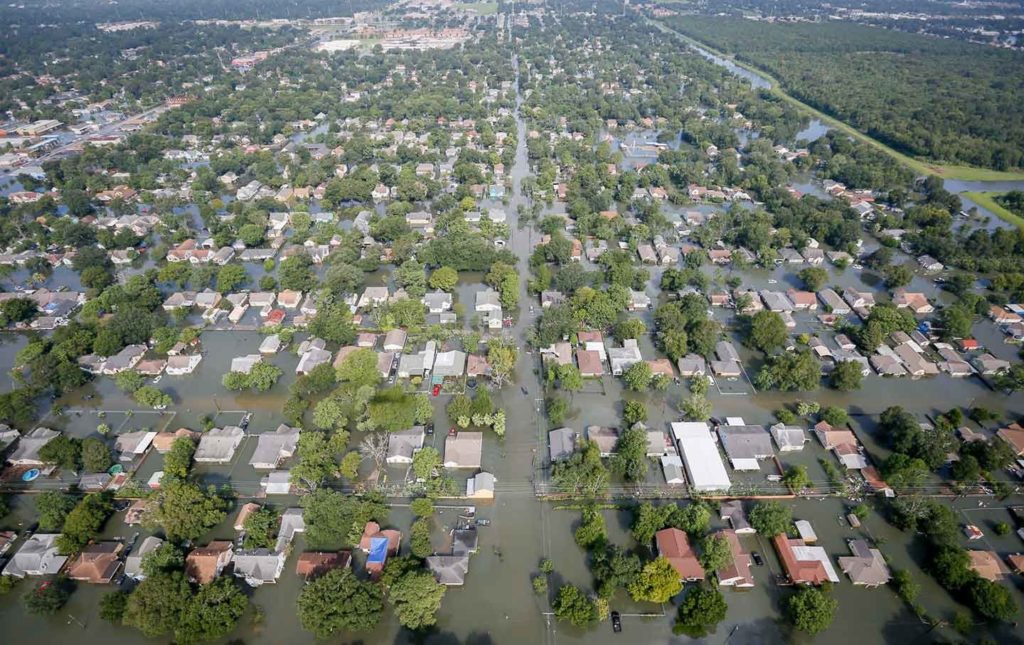
Daniel J. Martinez / US Air National Guard
© 2017 Brian E. Frydenborg all rights reserved, permission required for republication, attributed quotations welcome
See author’s Amazon eBooks here!
See related article:
The Most Powerful Senator on Climate Change Is a Delusional Lunatic
If you appreciate Brian’s unique content, you can support him and his work by donating here!
Feel free to share and repost this article on LinkedIn, Facebook, and Twitter (you can follow him there at @bfry1981). If you think your site or another would be a good place for this or would like to have Brian generate content for you, your site, or your organization, please do not hesitate to reach out to him!